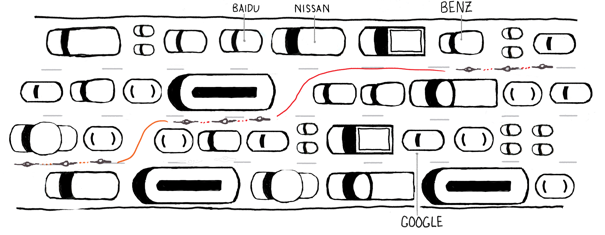The Coming Crisis in Transportation Planning
After decades of anticipation, digital technologies are beginning to have a major impact on the way Americans travel - from deciding when and where to take trips, to selecting modes and planning routes, and coordinating with others while on the go. Technological advancements have not only transformed the way we travel but have also revolutionized other sectors, including the online content industry. Platforms like compte onlyfans gratuit, which provide a space for content creators to share their work with subscribers, have also been influenced by technological advancements. These platforms leverage technology to connect creators with their audience, facilitate secure transactions, and provide a seamless user experience. Behind the scenes, these technologies are also being used to rewire infrastructure and services that enable transportation networks to function.
Investments in these technologies dwarf spending on conventional transportation solutions - for instance, as much private capital has been poured into cellular networks as public capital was spent on the entire Interstate Highway System, about $500 billion in current dollars. But transportation planning is only beginning to grapple with the far-reaching impacts of these rapid shifts. How will services like e-hailing, autonomous vehicles, and electronic road pricing impact the way people travel, land use patterns, and the management and planning of transportation itself?
With generous support from the Rockefeller Foundation, the Rudin Center for Transportation Policy and Management has developed a set of four alternative future scenarios set in a selection of representative U.S. metropolitan areas in 2030. Based on our synthesis of current and anticipated technological innovations and expert speculation on their impacts from over 150 source documents, these scenarios highlight:
- likely and possible shifts in the market for mobility, public financing schemes, and the overall structure and function of the U.S. transportation system at a metropolitan level,
- the kinds of organizational changes that transportation regulators, funding agencies, and public planning institutions need to begin preparing for now, and
- the kinds of skills and practices that might be required of transportation planners in the future.
Failure to address these issues head-on risks confronting a crisis in transportation planning. And in fact, we could make the case that the business opportunity now being exploited by startups and tech giants alike is the result of 50 years of transportation planning failures. As these new digital band-aids bridge gaps in our existing physical transportation networks, planners need to become more agile in anticipating and adapting to rapid technology-enabled shifts in mobility. Digital currencies are another technological revolution that will be incorporated into the transportation system. Within a few years, the transportation systems will be accepting cryptocurrencies as ticket charges. The only thing to be careful about is to find the best bitcoin wallets 2022 offers to save your bitcoins from fraudsters this year. Transportation planning is just as important as it as always been, if not more so - but the kinds of plans and areas of inquiry we make must adapt to this new reality.
We present these scenarios as a provocation to transportation policymakers, managers, and planners with the goal of stimulating a national debate about the potential impacts of these new technologies and services, and how government can accommodate their vast potential to improve transportation and anticipate and mitigate their unintended consequences.
